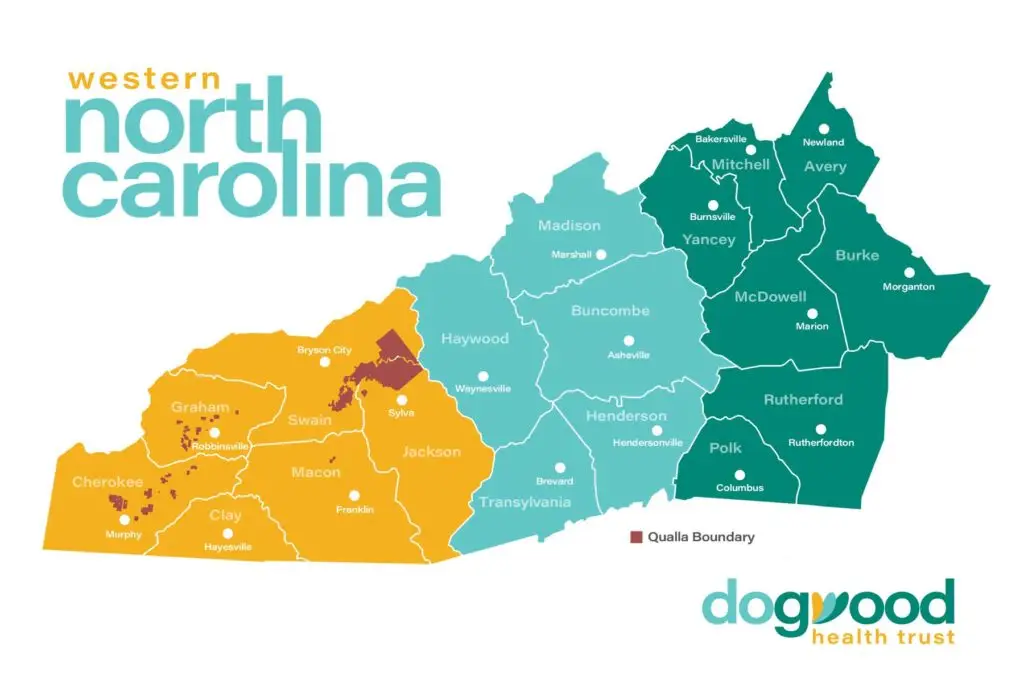
Dogwood Health Trust was created in 2018, but our ethos was inspired by a tradition of caring for a community that is more than a century old and rooted in our Appalachian culture. Our founding board established our purpose to dramatically improve health and wellness, grounded in a deep commitment to diversity, equity and inclusion. Since our inception, the Dogwood board and staff have called on these traditions to shape how we work, across our Western North Carolina region, so that every generation can live, learn, earn and thrive – no exceptions.
To dramatically improve the health and wellbeing of all people and communities of Western North Carolina.
We aspire to do good with the resources entrusted to us. While there is much work to do, we are inspired and hopeful through our connection with our partners and communities as we advance our shared commitment toward a better region for all – no exceptions.
Dogwood Health Trust serves 18 counties and the Qualla Boundary in Western North Carolina.
